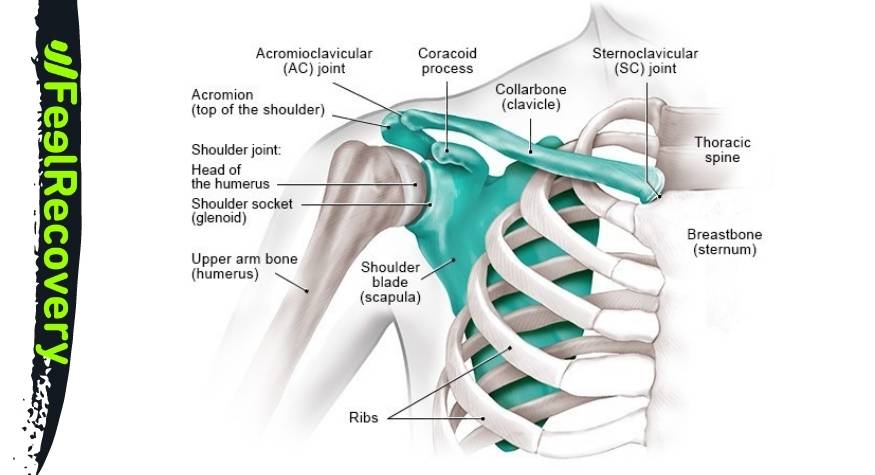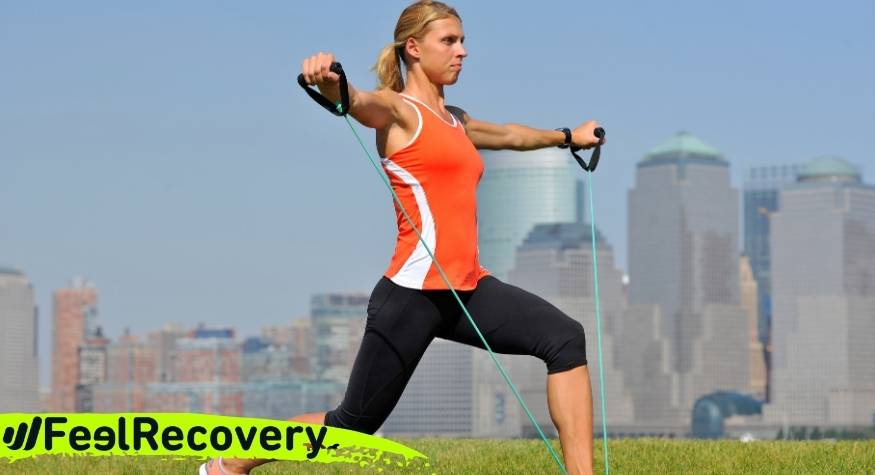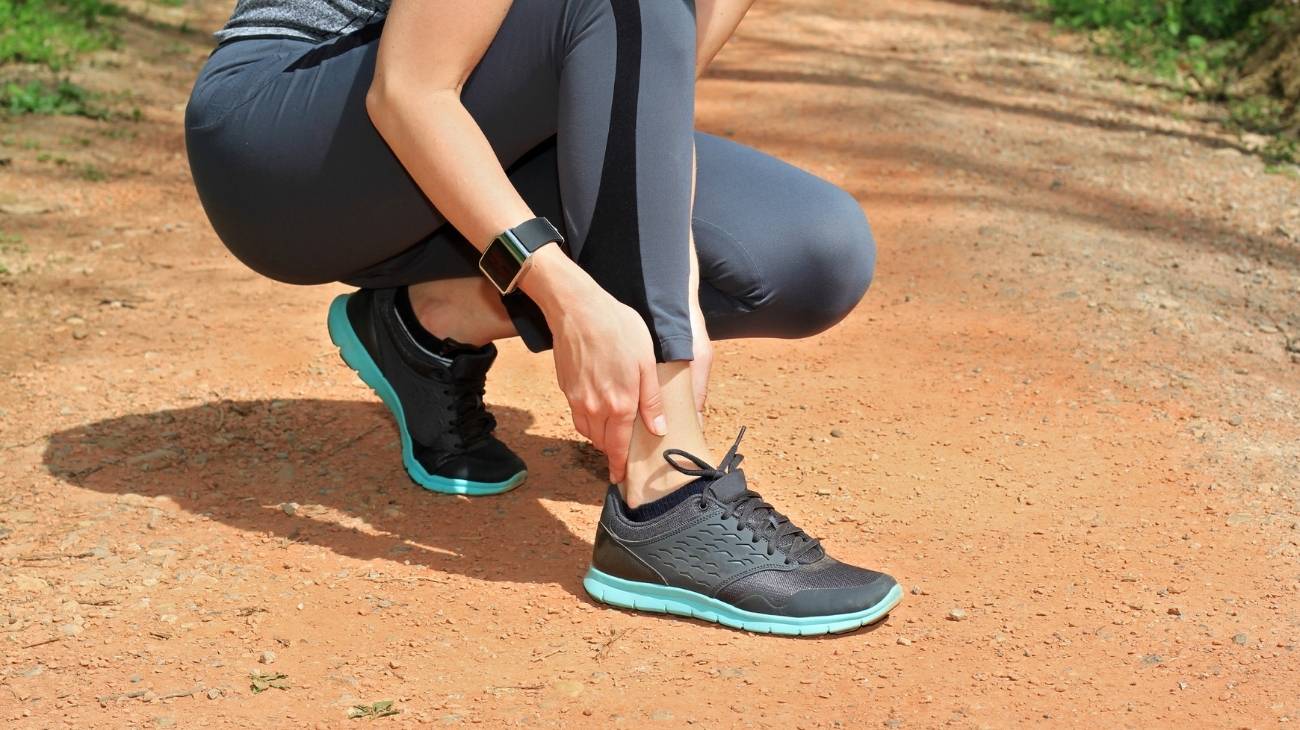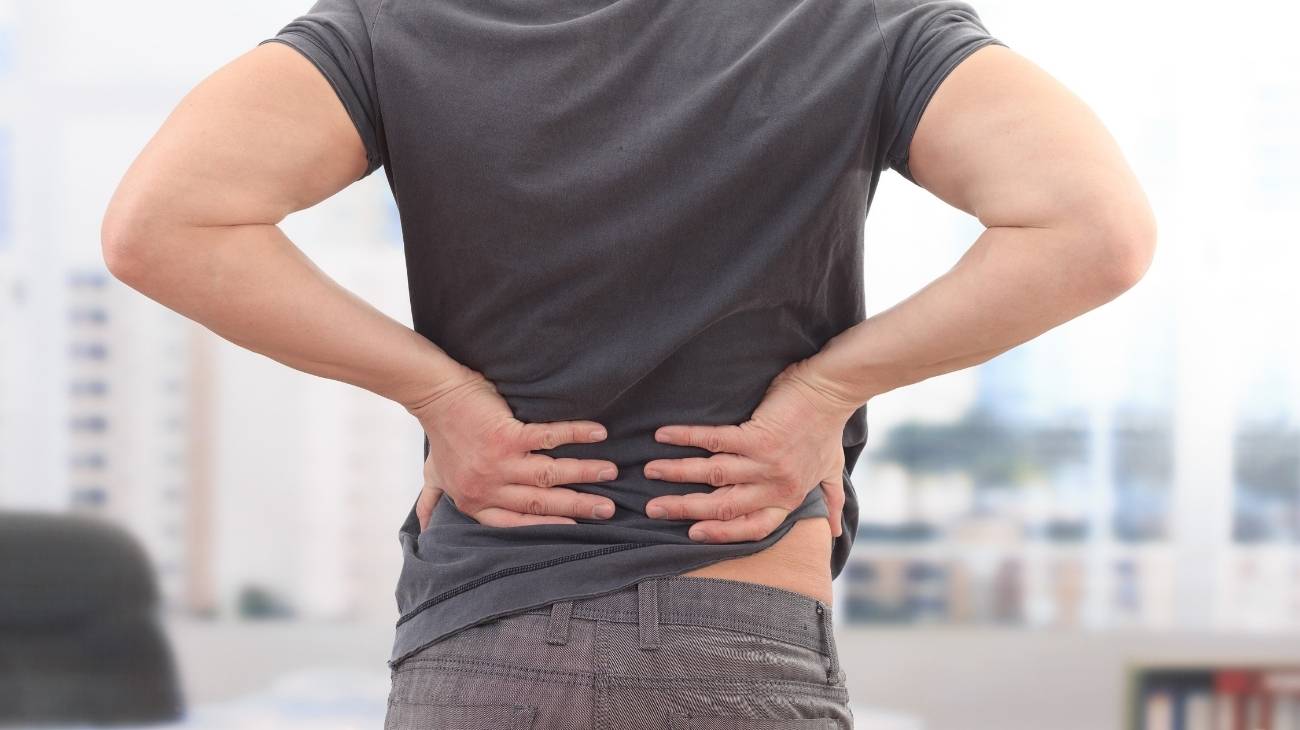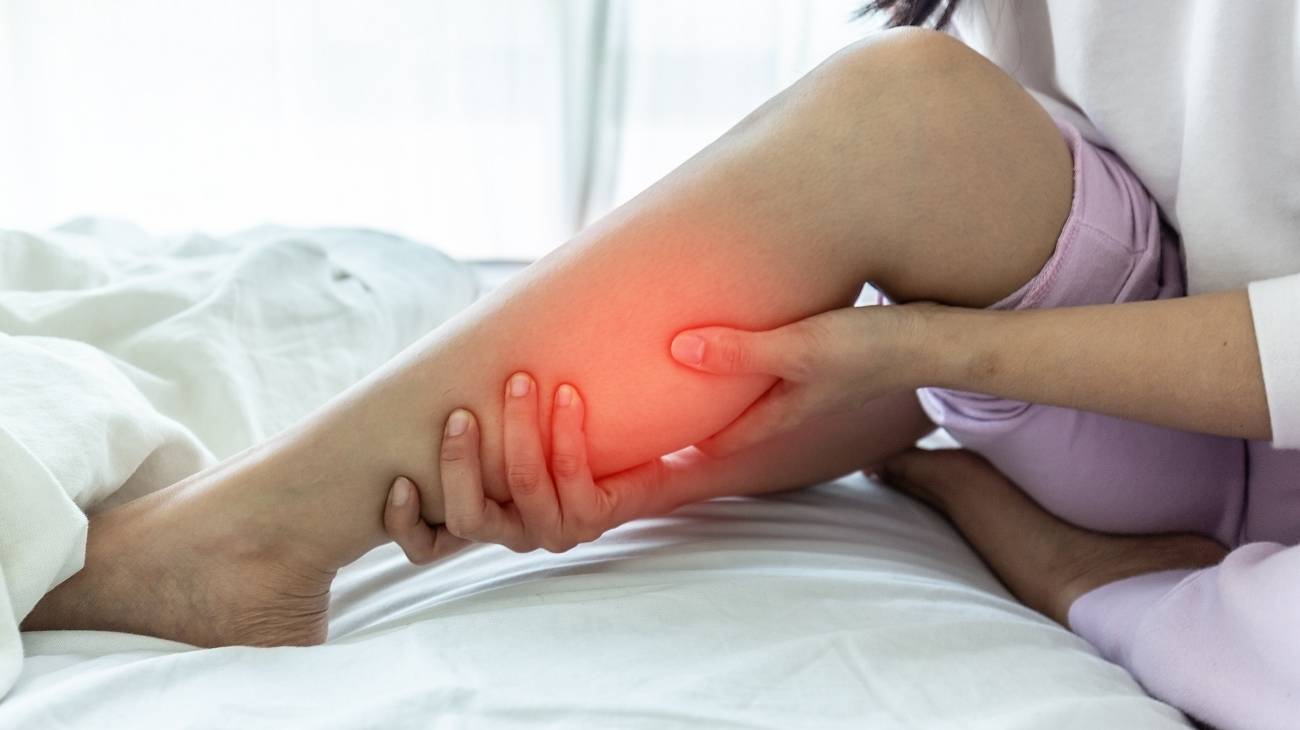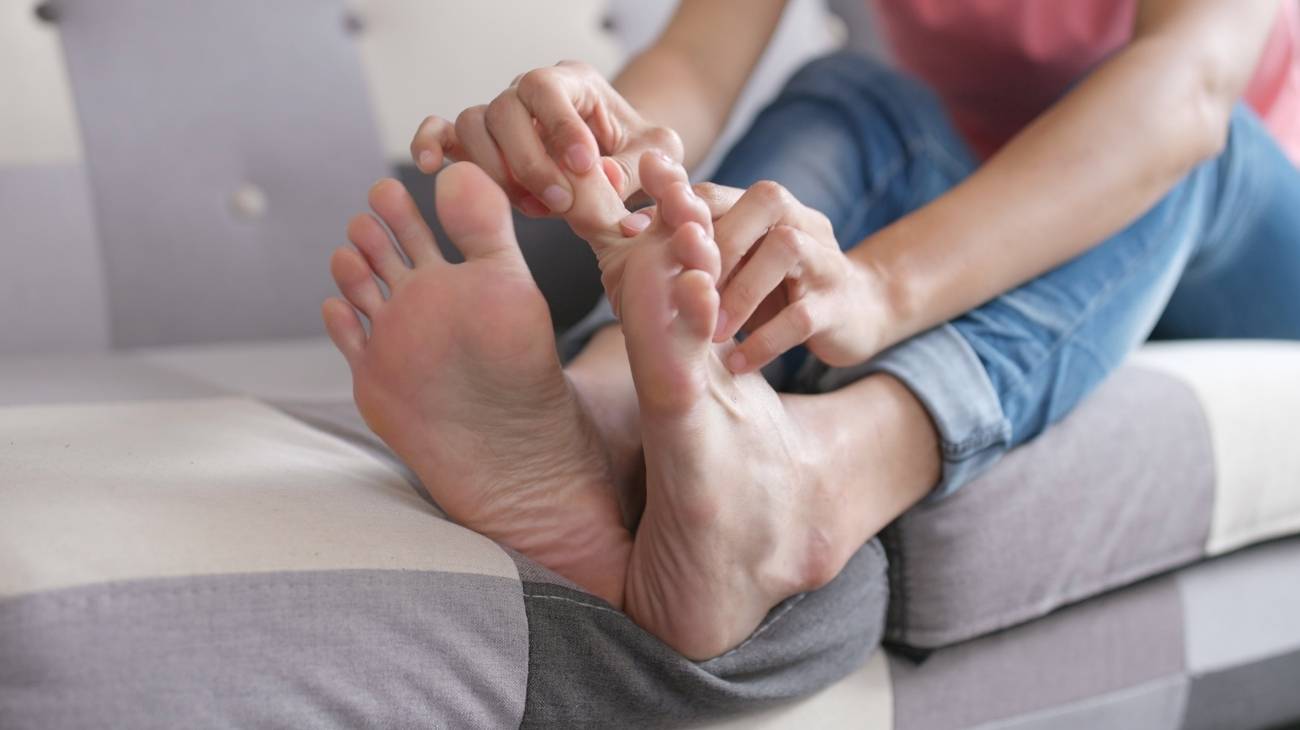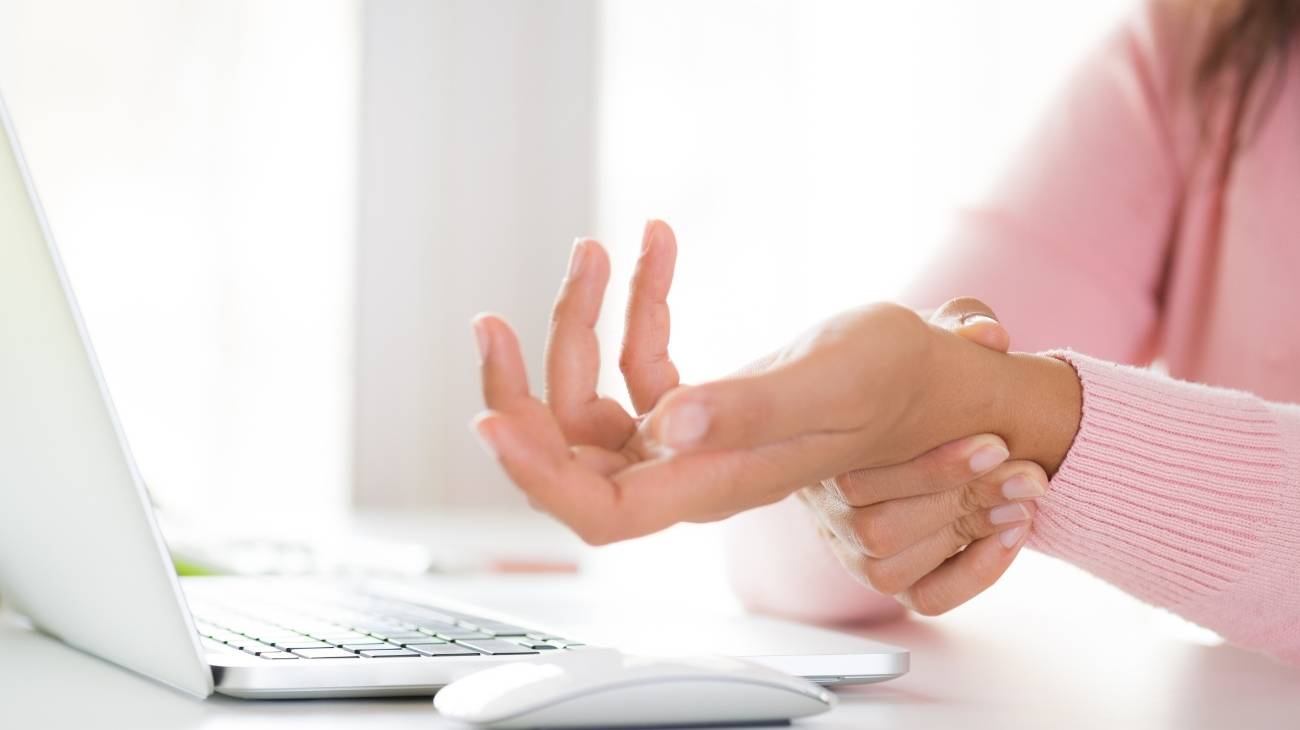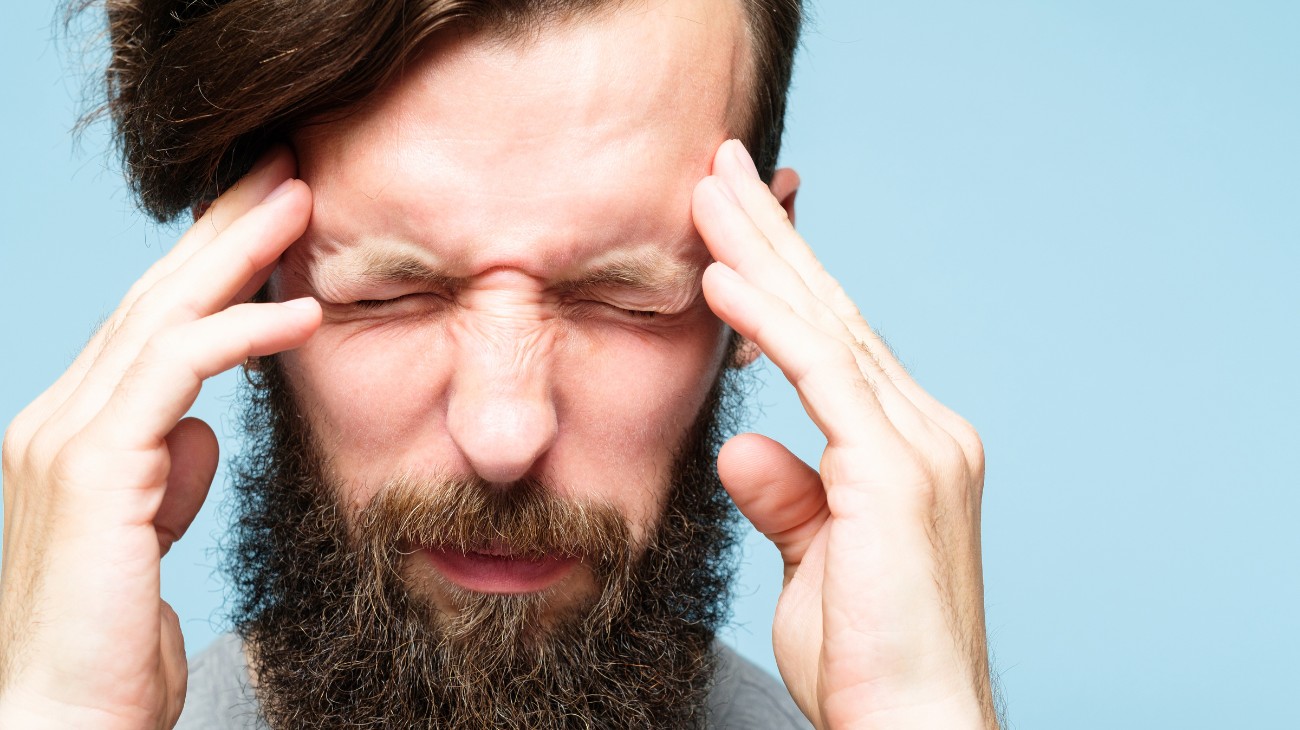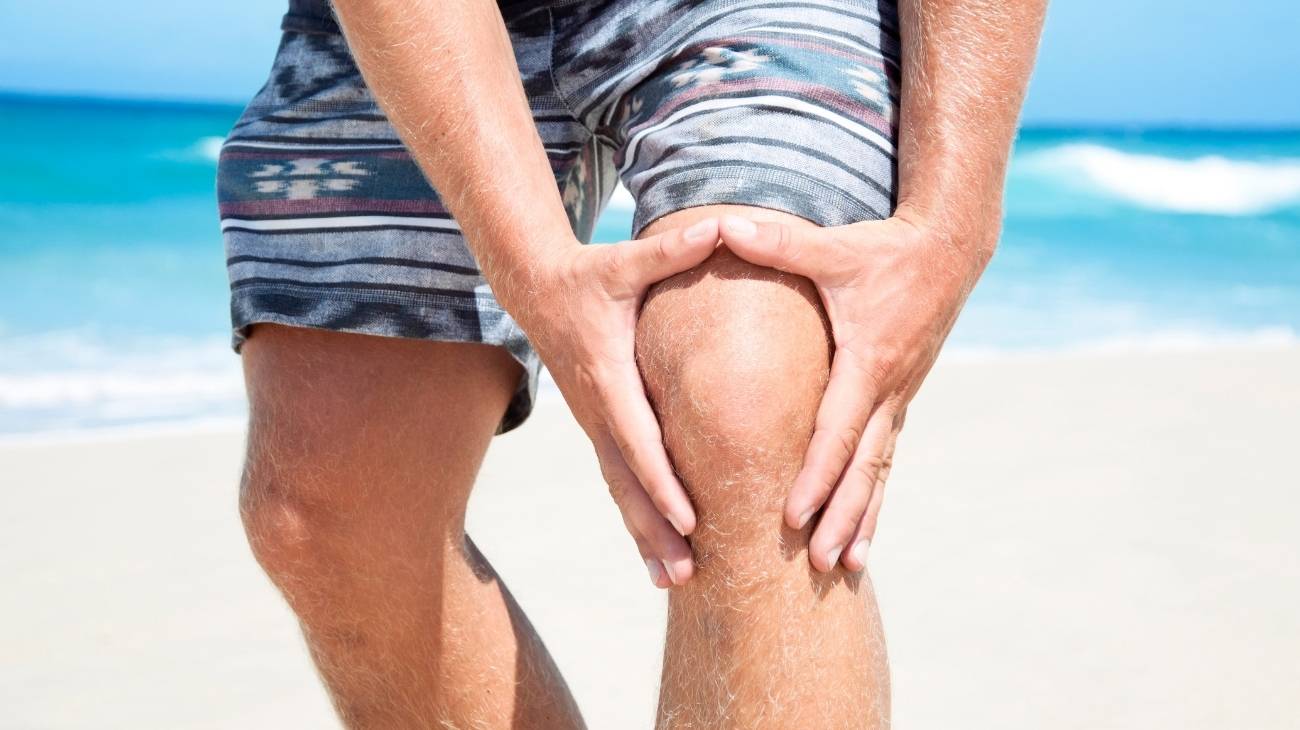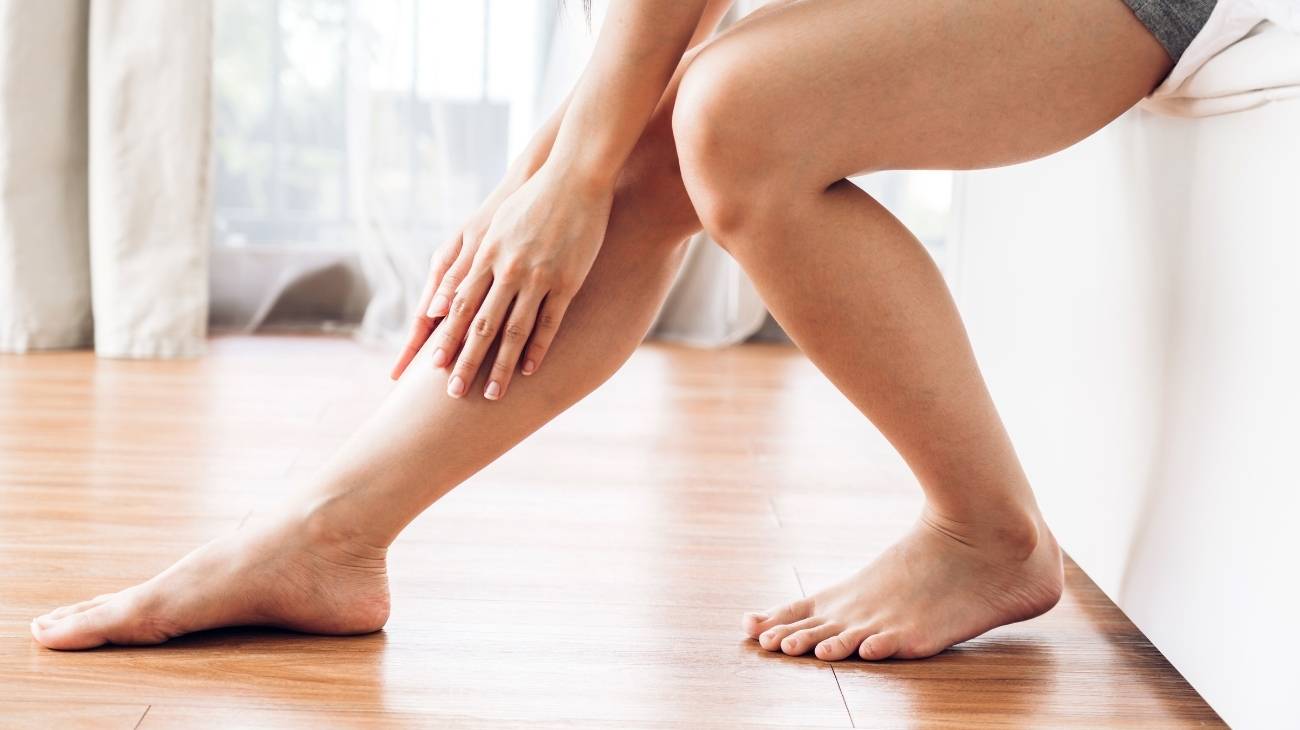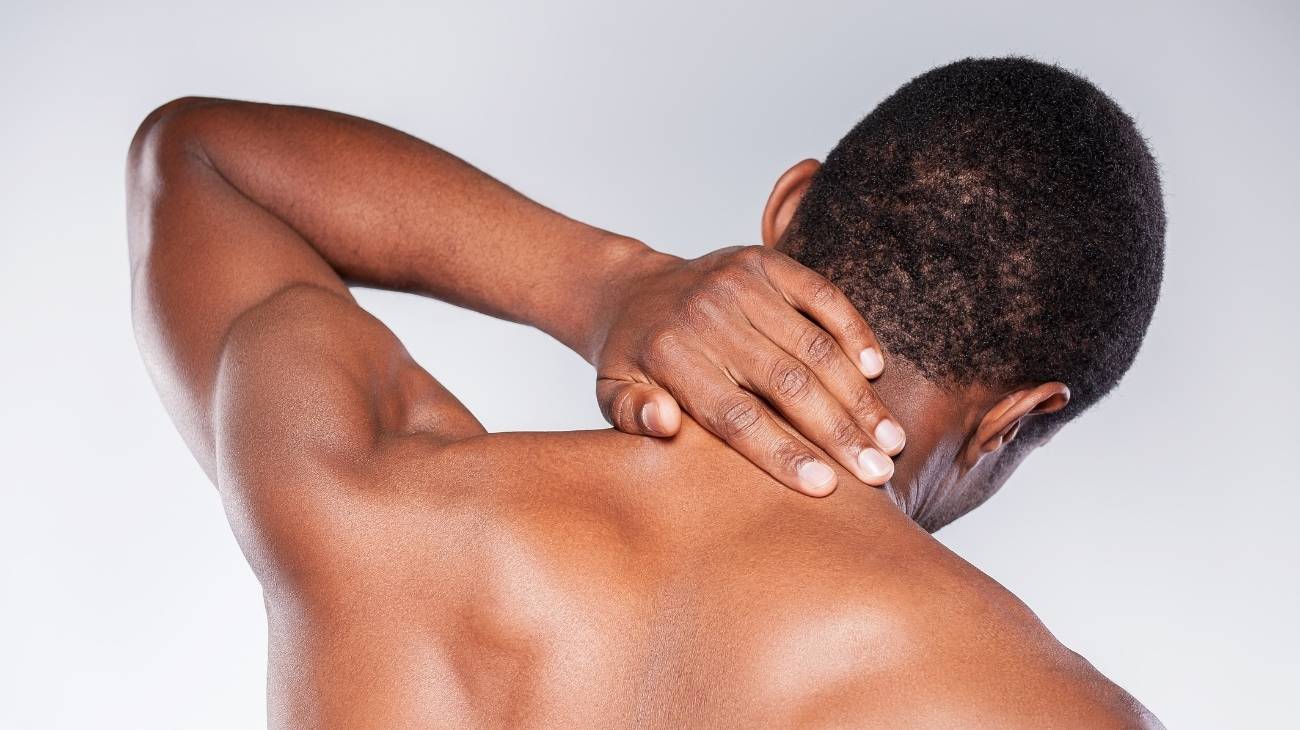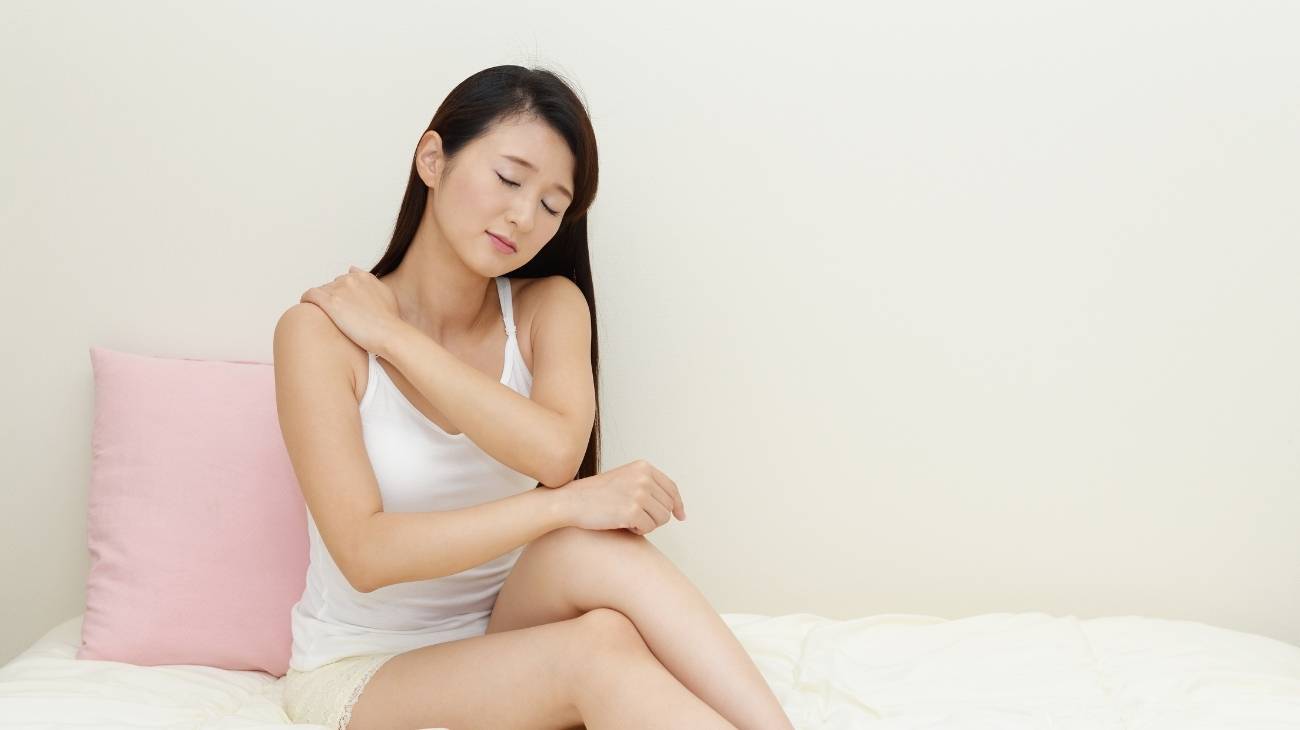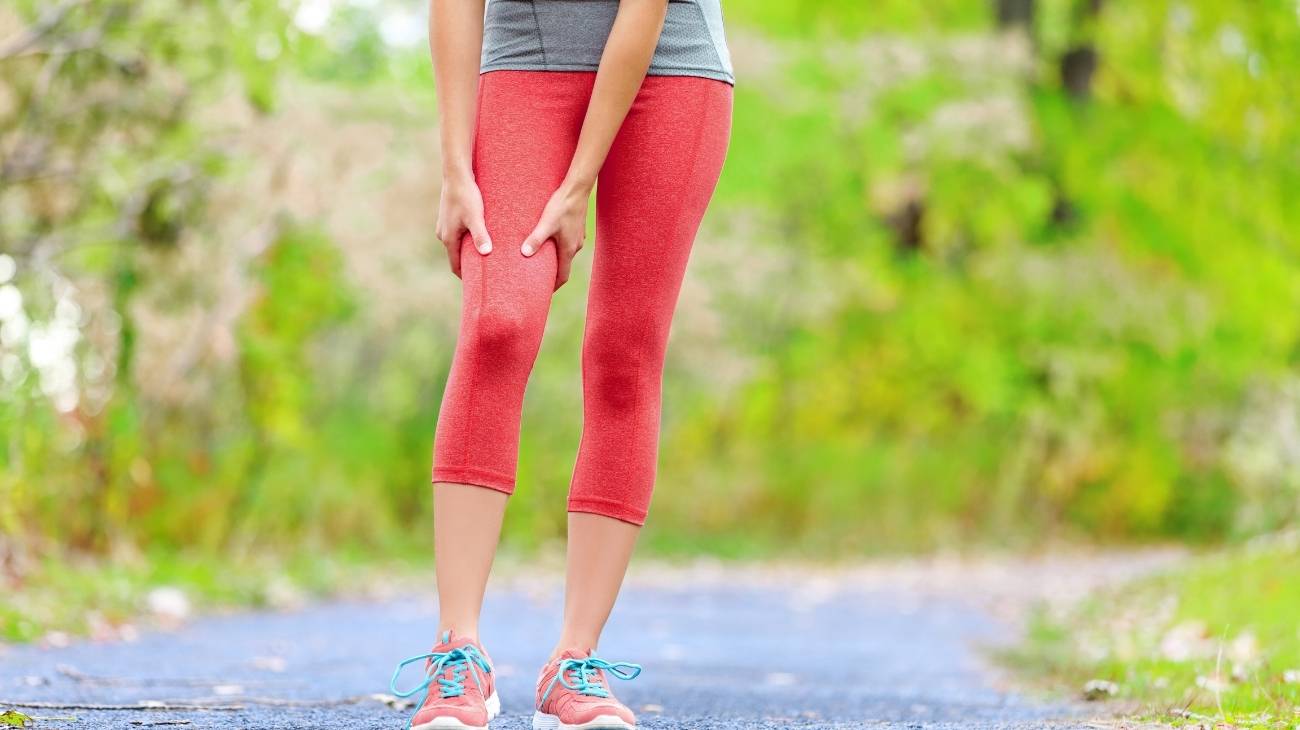- What is shoulder pain and how to identify it?
- Best products to relieve shoulder pain
- What causes shoulder pain and what are the causes that originate it?
- What kind of diseases can cause pain in the shoulder joint?
- What are the symptoms and types of pain that make us think that we have a shoulder injury?
- How can we relieve shoulder pain through complementary and non-invasive therapies?
- How to apply the RICE therapy step by step to reduce shoulder joint pain?
- How to prevent future shoulder and arm pain?
- Why should we avoid pills and injections to relieve shoulder and neck pain?
Need to reduce shoulder pain? This joint is complex and can be disabling if neglected and injured. Therefore, you are surely eager to know how to remove shoulder pain, whether it is from acute or chronic pain.
Below you are going to discover the causes of shoulder pain, we describe its symptoms, help you prevent and treat it non-invasively and without medication, and even tell you what is good for relieving shoulder pain due to stress, very present in our society.
What is shoulder pain and how to identify it?
The shoulder is made up of the clavicle (the bone that joins the arm to the neck), the scapula (large flat bone with the acromion, which is the highest and most prominent area) and the humerus, which is the long bone of the arm on which the biceps rests. Their union is made possible by the tendons of the biceps and the rotator cuff. In addition, it has a bursa located between the bone and tendon tissue.
This is the most mobile joint assembly in the entire body, so it is also the most prone to problems. When any of these parts or the whole joint feels uncomfortable, we speak of shoulder pain. It usually occurs in response to a sudden movement of the arm.
The pain is usually accompanied by limited mobility. If this is due to a mild reason, it will disappear in a short time, but if this is not the case and the pain is acute and intense, consultation with a doctor is practically obligatory, since it is practically certain that the pain will spread over time, with a consequent reduction in movement and loss of quality of life.
Best products to relieve shoulder pain
Bestseller
-
Microwave Wheat Bag for Neck & Shoulder Pain Relief (Hearts)
£24,95 -
Microwave Wheat Bag for Neck & Shoulder Pain Relief (Oxford)
£24,95 -
Microwave Wheat Bag for Neck & Shoulder Pain Relief (Sport)
£24,95 -
Microwave Wheat Bag for Neck Pain Relief (Hearts)
£20,95 -
Microwave Wheat Bag for Neck Pain Relief (Oxford)
£20,95 -
Microwave Wheat Bag for Neck Pain Relief (Sport)
£20,95 -
Microwaveable Wheat Bag for Pain Relief (Hearts)
£20,95 -
Microwaveable Wheat Bag for Pain Relief (Oxford)
£20,95 -
Microwaveable Wheat Bag for Pain Relief (Sport)
£20,95
What causes shoulder pain and what are the causes that originate it?
Every day we encounter situations that can make our shoulders ache at the same time that intensify a discomfort that we may already have previously, let's see which are the most common and how to identify them.
For intense efforts
Making the tissues of our body do more force than they are prepared for means that they are strained, overextended and damaged in different ways, the most common being the tear or dislocation in the shoulder, although many other problems can occur, which we will see in the next point. Pain of different intensity and typology, inflammation, stiffness, internal infection, etc. are many symptoms depending on the injury produced from the effort made.
Bad sleeping postures
The usual thing when sleeping is that by acquiring a bad posture, the shape of our body is in an unnatural position, which can cause pain. It happens when we take the pillow sleeping face down or always rest on the same shoulder. A bad positioning of the neck also affects that of the shoulders. Cervical pain itself can radiate pain to the shoulder even if it has been kept in good posture.
The symptoms that occur as a result of a bad sleeping position are temporary and not too intense, the most common being general pain in the shoulder, neck or head. Sometimes there may also be popping when making the rotational movement with the joint.
Due to stress
Stress is a psychological problem that affects us physically. It generally affects the head and neck but then begins to spread to the shoulders and, in general, the upper back. This pain is very diffuse and difficult to diagnose because the relationship between both circumstances is generally unknown. Moreover, this problem also favors the appearance of pain or accentuates it if it already exists, so that, in any case, it is essential to treat stress if we want the physical pain to disappear.
Due to sudden and uncontrolled movements
These can cause the problems we have seen above as well as others related to the synovial bursa, joint capsule, etc. It is also possible that they move or detach tissues which is very painful and can lead to gravity problems by mechanical action (friction, tearing, crushing, etc).
Virtually any symptom can appear as a result of the problems that sudden and high impact movements produce in the shoulder, so it will be difficult to determine what exactly is happening to us. Therefore, a visit to a specialist is mandatory to determine exactly what ailment you have and, thus, design your treatment if necessary.
What kind of diseases can cause pain in the shoulder joint?
Undoubtedly, there are many pathologies, diseases and other types of problems that make us feel pain in the shoulder, let's review the most common ailments:
Arthrosis
Bad habits, age, trauma, overuse and various injuries cause the articular group of the shoulder to degenerate. This eventually causes the bones to rub against each other, harden and even grow bony protrusions.
It has severe and late onset symptoms, making it a virtually incurable disease that requires surgery; for this reason, we encourage you to prevent it. Pain appears and increases progressively as the bone wear and tear increases. It is accompanied by inflammation and stiffness. This implies that the functional capacity of the shoulder is diminishing until the movement is very limited
Osteoarthritis
This ailment is similar to the previous one, we have joint inflammation. The difference is that it is not necessarily due to joint wear and tear but for any other reason, including bone diseases, infections, etc. The swelling of the bone causes the joint to deform, definitely increasing its size and being visible a bulge. This is followed by stiffness and, with it, the limitation of movement in one direction or another. The greater the immobility, the more tingling. All this, of course, is accompanied by considerable pain.
Sprains
The ligaments have a pull, being able to break in the most serious cases, generally by a movement badly carried out, unexpected or abrupt, especially when the shoulder appears in an unnatural position, by excessive use of the articulation or by a blow.
The pain is sustained and inflammation of the ligament occurs, which becomes visible in the area. It is also very common for a bruise to appear in the affected area. Undoubtedly, the most effective way to diagnose it is that at the moment a snapping sound is heard. A sprain can heal only in the mildest cases or require surgery to repair the tissues when there is a total rupture of the ligament, being especially difficult when the injured area is the union of a ligament and a bone.
Tendonitis
It is the inflammation of a tendon. There are micro-tears and necrotic areas may occur. It occurs both by accidents that cause the tendons to be hit, as well as by inadequate internal processes, such as the tendon rubbing against a spur or an overextension due to shortening of the biceps. It is also common in cases of repetitive work or high intensity sports. You feel pain to the touch, when pressing the tendon and when moving the shoulder, in addition it is an inflammatory process.
Biceps tenosynovitis
It is the inflammation of the biceps tendon as well as the tendon sheath that protects it. This is a more severe tendinitis. The pain radiates to the arm and is much stronger when we move it and touch it. Weakness is also frequent and can affect the rotator cuff or facilitate other injuries. If not remedied in time, the tendon will rupture completely.
Fractures
Results in a breakage of part or all of the bones. It is very difficult for the scapula to break completely, but the clavicle is more sensitive. In any case, cracks, large or small, are very painful. The area becomes very swollen and hot, we can even see a deformity, always depending on how serious the fracture has been, including displacement of the bone. A fracture is a serious problem and requires a slow and perfect recovery to avoid sequelae, because it is very easy to refer pain in the area as time goes by if we do not heal well.
Bursitis
In the shoulder, like the rest of the joints, we have a bag called bursa that keeps the synovial fluid. This is a method of cushioning between the joints. Shoulder bursitis consists of the inflammation of this bursa. The reasons why the bursa becomes irritated is because of constant pressure or a continuous tearing motion, for example, by rubbing it against a splintered bone.
The inflammation is visual, appearing a bulge in the shoulder and coloring the skin of red by the increase of temperature. It is one of the most painful pathologies. It can become chronic, in which case the pain will not be so intense but you will see increasingly reduced the ability to move, atrophy of the muscles and causing a really limiting motor weakness appears. The joints become stiffer, they hurt and we notice a lot of sensitivity in the area.
Muscle strains
It is what we commonly know as muscle pull, a tear of variable magnitude of the shoulder fibers, which will perform a retraction movement creating a gap that is very difficult to repair if the activity is not stopped immediately, so it can escalate. The reason is dynamic overload. We feel pain and it is much more difficult to move the muscle. We also see that the area becomes inflamed, reddened and may even bruise.
Shoulder dislocations
These are processes in which the bones move out of the place they should occupy naturally. They do not imply breakage but that a point of union between bones changes position. There is an appreciable deformation and the joint is completely immobilized. Sometimes, especially if we maintain the situation for a long time, there will be a considerable inflammation and it can even change the color of the skin, the pain is very intense.
Tears
A tendon ruptures partially or completely because of an injury, which can be caused by a direct impact, unnatural position, pull, blow or fall or because there is an overload caused by maintaining too much weight for a long time or repetitive movements.
When there are microcracks these will repair themselves if we rest for a short period of time, usually between 5 and 7 days. But if we do not do it, the fissures enlarge and can become a bigger problem, producing a tear that implies a multiplication of the symptoms, which are pain, internal palpitation, internal bleeding, loss of mobility, etc.
Rotator cuff injury
The rotator cuff is the set of tendons and muscles that hides under the bones of the shoulder joint. Its main function is to give firmness and stability to the head of the humerus. This injury occurs mainly due to repeated overhead movements. There is a deep, dull pain in the shoulder area, weakness, and it is very difficult to perform certain actions involving elbow flexion and shoulder twisting.
Frozen shoulder syndrome
Also known as adhesive capsulitis, what happens is that the shoulder capsule thickens and then hardens, which usually causes a decrease in the amount of synovial fluid and, therefore, the bursa does not perform its function properly. The most probable causes are an anterior immobilization of the shoulder, diabetes and diseases such as hyperthyroidism, Parkinson's disease or heart disease. There is stiffness, dull pain in the whole joint, with greater incidence in the external face. As time passes, mobility worsens but pain decreases.
Spur
A spur is a bony protrusion that has usually been created by a crack or break in the bone, which has been poorly fused. This piece, with a more or less lacerating tip, tears the adjacent tissues as we make arm movements. Obviously, the pain appears quickly, but other problems such as tendonitis, tears, infections, etc. can occur, all with their corresponding symptoms.
Calcification
When trauma, tears, inflammation of the supraspinatus tendon or a degenerative disease affecting the shoulder occurs, calcium can be deposited within the joint. The calcification is perfectly visible in radiography, being located where the tendon inserts into the trochlear bone.
This causes a very intense and constant pain, especially when we want to move the arm, which can be impossible. The treatment requires shock waves or infiltrations. Likewise, recovery will require electrotherapy and even, in chronic cases, surgical arthroscopy.
Compression or impingement syndrome
This is a combination of rotator cuff tendinitis and bursitis. The injured cuff causes its muscle to swell, compressing it within the shoulder bones as a whole, which leads to a significant reduction in blood flow. This in turn means that the muscle tissue loses capacity, weakening and atrophying to the point of deformity. There is pain in postures such as extension of the arm over the head, muscle weakness and, in the worst cases, inability to lift the arm or rupture of the biceps tendon.
Suprascapular nerve compression
In the shoulder we have a sensory-motor nerve coming from the upper trunk, specifically located under the scapular ligament. This nerve is the one that gives motor properties to the supraspinatus muscle and innervates the acromioclavicle, the coracoacromial ligament and the glenohumeral joint.
For reasons such as cysts, hypertrophy, lipomas or irritations, this nerve can become compressed. When this occurs, a deep, dull pain appears in the back and side of the shoulder. This is perceptible on palpation of the suprascapular area and, in addition, radiates to both the arm and neck. We can lose functionality in the arm and this does not go above 90 degrees with respect to the trunk, being very difficult and painful the shoulder rotation.
What are the symptoms and types of pain that make us think that we have a shoulder injury?
Shoulder injuries, as well as other problems that we have already seen, are very varied. For this reason, the symptomatological picture can be quite wide, we are going to list the most common symptoms when we have a shoulder injury:
- Pain when lifting the arm: It is usually bony (rubbing of the serosal sac with the clavicle or of the humerus and scapula) or coming from the triceps. It is also the one that helps us to make a quick diagnosis of rotator cuff injury.
- Pain radiating to the arm: It appears when the problem comes from another area, generally with overexertion of the biceps, but also from the neck or even due to nerve failure in the arm joint (elbow) or cerebral arthrosis.
- Inflammation: Many of the pathologies include inflammation as a main symptom in addition to pain. It is caused by external blows or by the own internal injury of a tissue, by an infection and, in short, by many abnormal circumstances that take place in the organism.
- Stiffness: The tissues are constricted, becoming totally hard and making it impossible to knead them. This reduces the range of movement and produces a lot of pain.
- Weakness: When an injury is suffered, the affected area loses capacity and, as a result, less and less effort is made. This in turn causes weakness of varying intensity.
- Bulge or deformity: Circumstances such as inflammation of the bursa, a fracture, extreme stiffness of the muscles or abnormal bone growth cause a bulge or deformity to appear. These are nothing more than highly developed internal inflammations or, directly, parts of bone that have become displaced.
- Dysfunction: This occurs when the weakness is such that it prevents us from carrying out the function of one or more of the parts that make up the shoulder joint. Thus, loss of movement is common.
- Atrophy: Around the shoulder there are muscles that can atrophy due to little use when we are at rest. Atrophy can also occur as a result of impingement or friction with other tissues.
- Joint instability: A displacement or a rupture may mean that the joint loses its stability, so that we have no control over its movement. This is a serious symptom that needs medical attention.
How can we relieve shoulder pain through complementary and non-invasive therapies?
If you want to get significant shoulder pain relief without having to take medication, try the different alternative therapies with analgesic power to achieve a reduction of the damage without harming your body.
Thermotherapy
It is a therapy that we will use when we want to relieve chronic shoulder pain or when it has already passed its acute phase or the pain is not too localized. To apply heat to the area, it is important to wait until there is no inflammation, wounds or burns. You can use thermotherapy several times a day for periods not exceeding 25-30 minutes.
What you need to do is to put heat on the shoulder area. This will increase blood flow, irrigating the area and getting the cells to receive oxygen and nourishment to speed recovery. In addition, the heat is sedative, so it will give you more comfort, relax you and the pain will be more bearable.
Cryotherapy
Cryotherapy is the inverse action of the previous one, that is, the application of cold with the purpose of relieving shoulder pain. When we lower our temperature we slow down the flow of blood, so that we help to not inflame the area. In addition, the cold also serves to numb the nerves to prevent them from sending pain signals; it is an ideal analgesic, totally natural, fast acting and very effective. The negative side of cold therapy is that you can not perform as many daily sessions as in the case of thermotherapy; we must reduce them to a maximum of six and the duration of these sessions should not exceed 15-20 minutes.
Hot and cold therapy
Hot and cold therapy is quite effective in relieving shoulder pain. However, we recommend it once you have passed the acute pain phase, to further reduce the pain while trying to regain your muscle tone and mobility. Nor should you resort to it if you still have an inflamed shoulder.
It is ideal to begin to nourish the muscles, which may have been starved during the recovery process or for reasons of the injury or illness itself. With heat you help vasodilation, so you move more blood, which oxygenates the tissues through the capillaries. The cold and the blood flow itself serve to remove debris from the tissues, so that these are re-established with healthy cells and infection is avoided.
Massage therapy
Massage should be avoided if you have fractures, wounds, acute pain, lumps or considerable swelling. If this is not the case, of course, it is best to enjoy several massage sessions. These have many benefits, from muscle relaxants, amplifying the movement and reducing pain while normalizing its natural shape and position, help blood flow, feeding the tissues to return to perform their functions properly as soon as possible etc..
There are several types of massage and depending on your problem the expert will determine which type is more appropriate at all times. You may also teach you some simple movements to do a small self-massage at home when you wake up and another one before going to sleep.
Acupressure therapy
Acupressure is an ancient technique of Chinese medicine. With it we can access affected areas without having to touch them directly, which is ideal when these areas are very painful or have fractures. What this therapy does is to apply pressure with the fingers, or sometimes with elements such as massage balls, etc., on points of the body other than those that really hurt.
Acupressure points for shoulder pain relief are:
- E38: Eliminates pain that occurs in the anterior part of the shoulder and if it is of an acute type. It is located in the shin, right in the middle of the shin.
- TC10: It serves to reduce the intense pains of lacerating effect that lead to produce great sensitivity. You find it in the back of the arm, just in the hollow of the outermost side of the elbow.
- 4IG: This is a very popular universal point that helps, among many other things, in the treatment of generalized shoulder and arm pain. We have it in the hollow between fingers 1 and 2 of the hand, just above the junction between the two.
- GB20: Double point that relieves tension and pain in the shoulders and neck. They are symmetrical to the vertical between the skull and the nape of the neck, just on the outer side of the prominent tendons.
Other effective alternative therapies
- Natural remedies using plants: If you like to use plants to relieve your pain, remember that those with analgesic properties are lavender, rosemary, mint, nettle and valerian. Season your infusions with cinnamon and the benefits will increase.
- Acupuncture: Acupuncture works the same points as acupressure. The difference is that they are not stimulated by pressing with the fingers but by sticking specific needles, thin and long, in them. It is claimed to be more effective because depending on the pain and other symptoms, we can introduce the needles a certain number of millimeters, achieving much more specific results.
- Kinesiotherapy: Assisted mobility, the star resource of this therapy, is essential for those who have suffered a severe injury and, of course, for those who have had to undergo surgery. If your case is not so serious, the best thing you can do is to go to an expert in the field to help you as soon as possible to work performing exercises to improve the function of the damaged parts while we get to reduce shoulder pain. Then continue with those able to increase mobility, flexibility and strength.
- Osteopathy: Mobilization is the main protagonist in osteopathy, so we must resort to this therapy once we have passed the acute phase of pain. The specific manipulation, as a whole, will serve to eliminate the stiffness caused in the shoulder by increasing the angles of movement in the three dimensions while we also get to work on the pain. Imbalances are consulted through stretching to work on them later. Then, we work on possible areas causing the pain or the pathology that is suffering. The work at a general level and if there are no complications will include muscle unloading, structural repositioning, strengthening of the advancement and reestablishing motility.
How to apply the RICE therapy step by step to reduce shoulder joint pain?
The well-known RICE therapy is a basic first aid method that can help you improve the condition of your injuries, accelerate your recovery and even avoid possible sequelae. We are currently implementing the PRICE therapy, which is identical except that we have added a first step before the four basic steps.
- Protection: The first thing you should do is make sure you protect both your shoulder and yourself. Stop playing basketball, lifting boxes or doing weights at the gym. Try to place your arm in its natural position, dropping it and keeping it close to your body (if you find it too difficult, you may have a fracture or dislocation, in which case it would be counterproductive).
- Rest: Take relative rest, always depending on the severity of your shoulder pain and the type of injury. Keep your arm as we have just mentioned. You should not stay the whole day in bed or sitting; you should do some activity, but no more than necessary. It is ideal to keep the area relaxed for a long time so that it recovers and is not forced again, but we must not reach the point of immobility or the tissues will atrophy and be weakened, being much slower recovery and may have sequelae.
- Ice: To reduce shoulder pain in acute phase nothing like using a little cold on the area. The cold will slow down or minimize inflammation and numb the area so that the nerves do not send painful signals. Wrapped ice is a handy remedy, but ideally you should have specific cold products to recover from injuries. Do not abuse these, using them a maximum of six times per day and up to 20 minutes.
- Compression: It is very likely that, due to the complexity of the joint, you should wear a compressive bandage that prevents you from making excessive movements, especially if you suffer from joint instability. Over the days, these can be replaced by a compressive shoulder brace. In any case, it will always be advisable to use a shoulder brace so that the tissues can be optimally welded without excessive movement. Healing is faster and there is less chance of sequelae.
- Elevation: Do not lie completely flat. Let the shoulder is above the height of the heart, this is simple, just with a couple of pillows behind the back you get it. With this, you will avoid that the inflammations of the tissues are too annoying, because there will not be so much blood flow in the area. This point should only be practiced while there is swelling or risk of it.
How to prevent future shoulder and arm pain?
Of course, we also want to help you avoid shoulder pain again, so we won't end without giving you some preventive tips to avoid shoulder joint discomfort and injury.
- Postural hygiene: There are many tips you should know about postural hygiene.
- You must have a straight back, keeping the natural curvature of the spine and with the shoulders perpendicular to it, in the same vertical as the buttocks if we look at us in profile.
- To avoid slouching your shoulders forward, use ergonomic cushions when you sit down. In addition, you should keep your back against the back of your chair, which should be at 90-105 degrees to the seat.
- In the car, lean on the headrest, which should be perpendicular to the floor, regardless of the inclination of the backrest, which should never be more than 110 degrees to the seat.
- Your desk should be at a suitable height so that when you place your hands on it, the elbow joint bends between 100 and 120 degrees without having to change the natural posture of the shoulder. To do this, your arms should not be pulled away from your torso.
- If you sleep on your side, choose a pillow with the lower part higher than the upper part. Also, change the side on which you lean from time to time. Avoid sleeping on your stomach and, if you do, do not do so by holding the pillow, as you lose the natural perpendicularity that the skeleton should maintain.
- Preparing for activity: Before doing any repetitive activity or any activity that puts considerable stress on your shoulder, prepare yourself. Your shoulder tissues should be relaxed. To do this, you will need to massage them if they are constricted until they feel soft. Afterwards, you will have to do some stretching to adapt the muscle to the intensity you are going to demand from it, this is called warm-up.
- Practice the activity: Make sure you choose activities that you are physically prepared for. When you practice them, maintain good posture, do not overexert yourself for a long time and use compressive garments for the shoulders. Of course, adapt progressively to the activity, especially if you have suffered from shoulder pain in the past.
- Specific exercises: Know and practice specific exercises to help prevent shoulder pain. These include stretching, toning, strengthening and mobility exercises. Being in shape will make it much more difficult for you to get injured. Be sure to work on your neck and arm as well, as the tissues in these areas also influence the condition of your shoulders.
- Lifting weights: Do not lift weights above your head; in addition to losing stability, you may strain your shoulders and even your neck muscles; try to keep the weights close to your body. Nor should you maintain overhead postures for too long a period of time.
- Breaks: Sometimes we cannot avoid continuous efforts and repetitive activities. If this is the case, be sure to avoid overexertion by taking breaks. It is not necessary that they are long and you can take advantage of them, even to do some exercise for
- Cryotherapy: If you notice that you have overexerted yourself, apply cold to the area to avoid overheating and possible inflammation. With the low temperature you will get that the tension does not go to more and even that is lowered, not getting to appear injuries.
- Thermotherapy: If you suffer from discomfort in the shoulder joint often, you have suffered serious injuries before or you are prone to pain, it is customary, when you feel well, for no reason, put heat on the area. In this way, thanks to the heat you will maintain a high flow of circulation that will feed the tissues at the same time that these will relax due to the sedative effect.
Why should we avoid pills and injections to relieve shoulder and neck pain?
We are used to taking a pill quickly at the slightest symptom of pain, but the truth is that it is not necessary. As alternatives you have the many therapies we have described above that are non-invasive, so they will have no adverse effects.
Medications in any format, include different chemical compounds that act in our body. These work by reducing pain but like all chemicals, they also have other side effects for us.
Side effects are those that can occur as a response of your body to taking medication. Even the most basic painkiller has them, which means that, although they do not always occur, you may suffer from them. So, you will have less pain but they may cause another problem that is even worse.
That is why we should never self-medicate, because we cannot know how a medicine will affect our body, no matter that in other occasions they have been beneficial. If you feel severe pain and you think you should take medication, go to the doctor and let him decide whether it is necessary to take drugs and in what dosage.
References
- Culham, E., & Peat, M. (1993). Functional anatomy of the shoulder complex. Journal of Orthopaedic & Sports Physical Therapy, 18(1), 342-350. https://www.jospt.org/doi/abs/10.2519/jospt.1993.18.1.342
- Halder, A. M., Itoi, E., & An, K. N. (2000). Anatomy and biomechanics of the shoulder. Orthopedic Clinics, 31(2), 159-176. https://www.orthopedic.theclinics.com/article/S0030-5898(05)70138-3/fulltext
- Terry, G. C., & Chopp, T. M. (2000). Functional anatomy of the shoulder. Journal of athletic training, 35(3), 248. https://www.ncbi.nlm.nih.gov/pmc/articles/PMC1323385/
- Dugas, J. R., Campbell, D. A., Warren, R. F., Robie, B. H., & Millett, P. J. (2002). Anatomy and dimensions of rotator cuff insertions. Journal of shoulder and elbow surgery, 11(5), 498-503. https://www.sciencedirect.com/science/article/abs/pii/S1058274602000642
- Van der Hoeven, H., & Kibler, W. B. (2006). Shoulder injuries in tennis players. British journal of sports medicine, 40(5), 435-440. https://bjsm.bmj.com/content/40/5/435.abstract
- Green, S., Buchbinder, R., Glazier, R., & Forbes, A. (1999). Interventions for shoulder pain. Cochrane Database of Systematic Reviews, (2). https://www.cochranelibrary.com/cdsr/doi/10.1002/14651858.CD001156/full
- Stevenson, J. H., & Trojian, T. (2002). Evaluation of shoulder pain. Journal of family practice, 51(7), 605-611. https://cdn-uat.mdedge.com/files/s3fs-public/Document/September-2017/5107JFP_AppliedEvidence.pdf
- Simmonds, F. A. (1949). Shoulder pain with particular reference to the" frozen" shoulder. The Journal of Bone and Joint Surgery. British volume, 31(3), 426-432. https://online.boneandjoint.org.uk/doi/pdf/10.1302/0301-620X.31B3.426
- Mitchell, C., Adebajo, A., Hay, E., & Carr, A. (2005). Shoulder pain: diagnosis and management in primary care. Bmj, 331(7525), 1124-1128. https://www.bmj.com/content/331/7525/1124.short
- Green, S., Buchbinder, R., & Hetrick, S. E. (2003). Physiotherapy interventions for shoulder pain. Cochrane database of systematic reviews, (2). https://www.cochranelibrary.com/cdsr/doi/10.1002/14651858.CD004258/full

